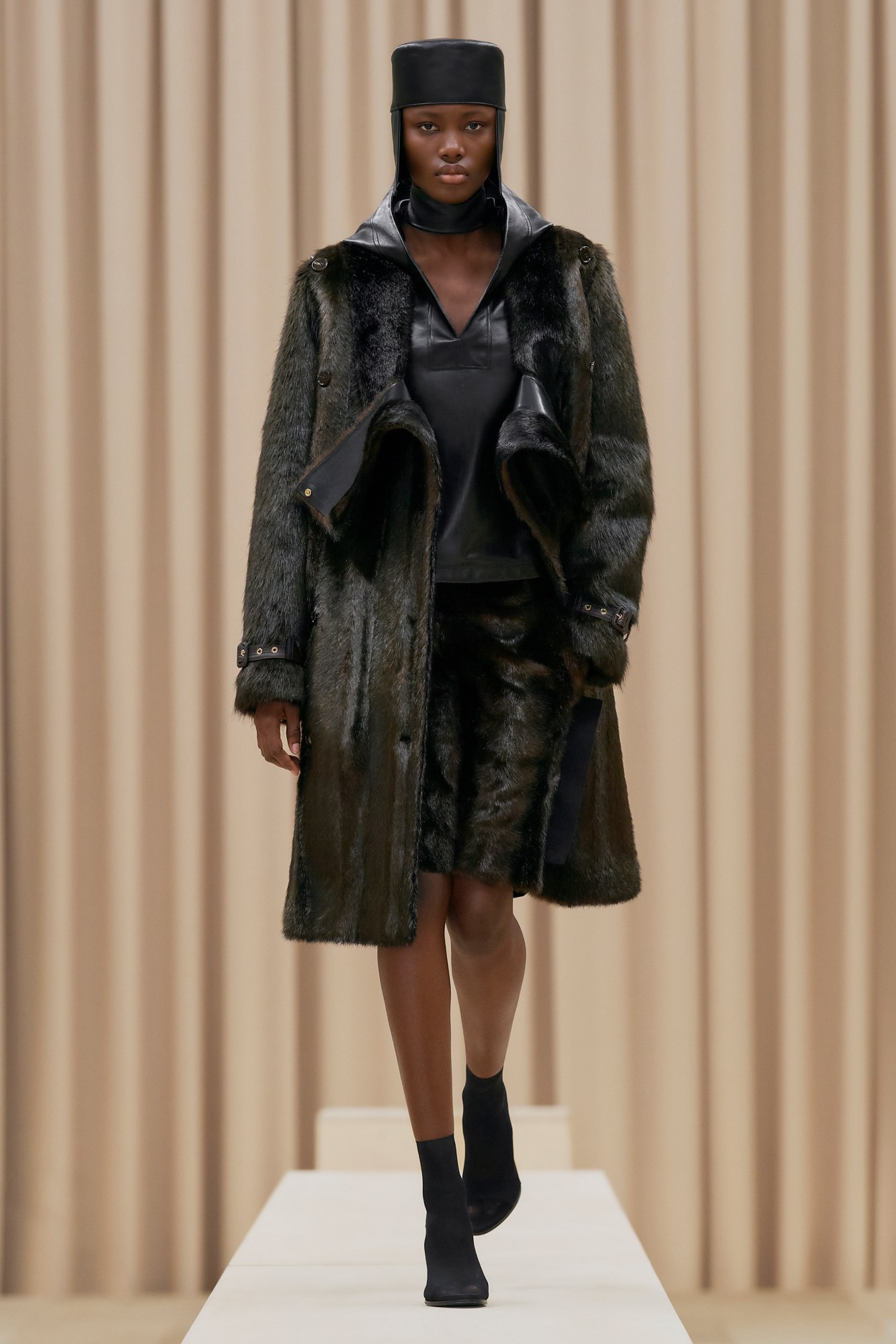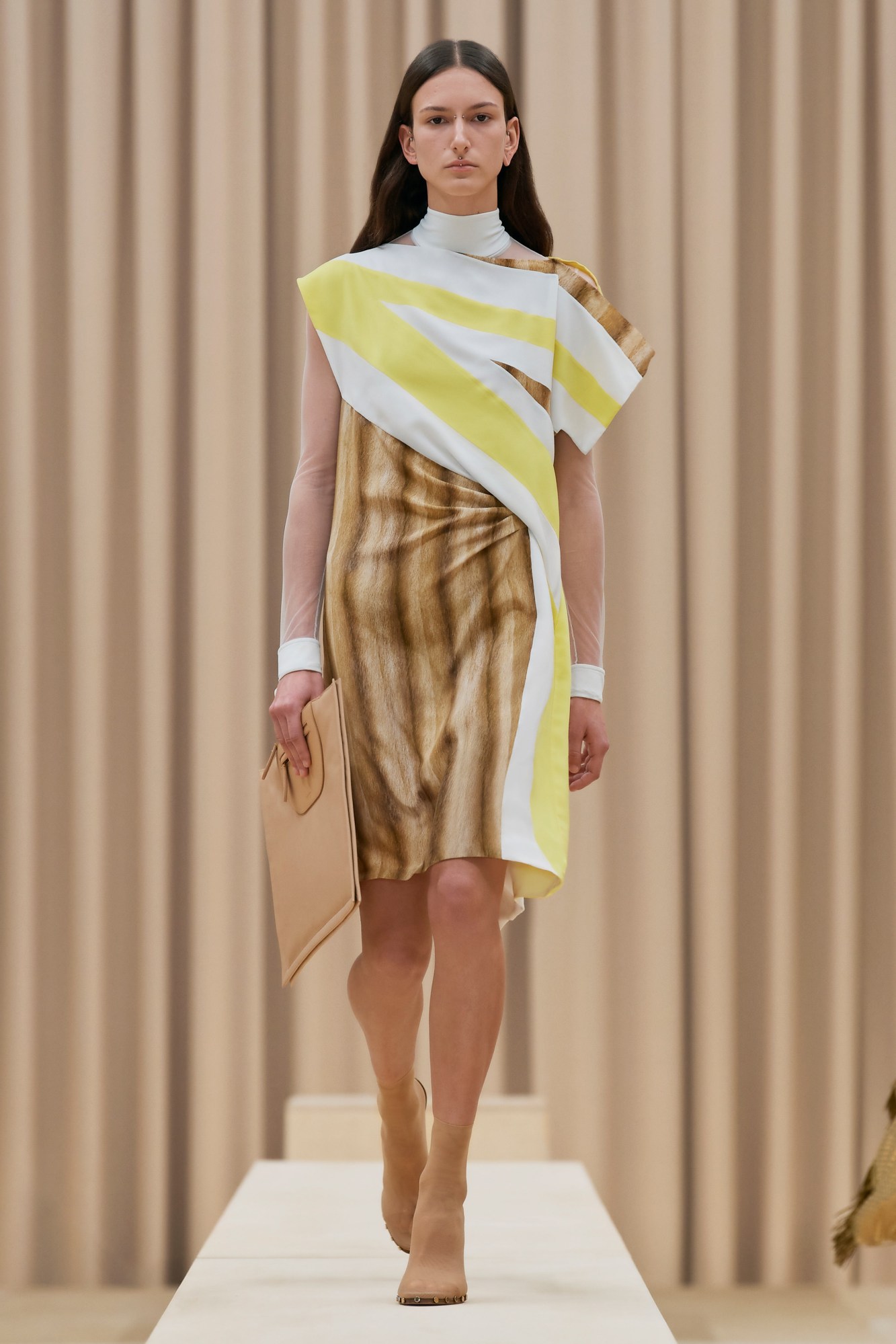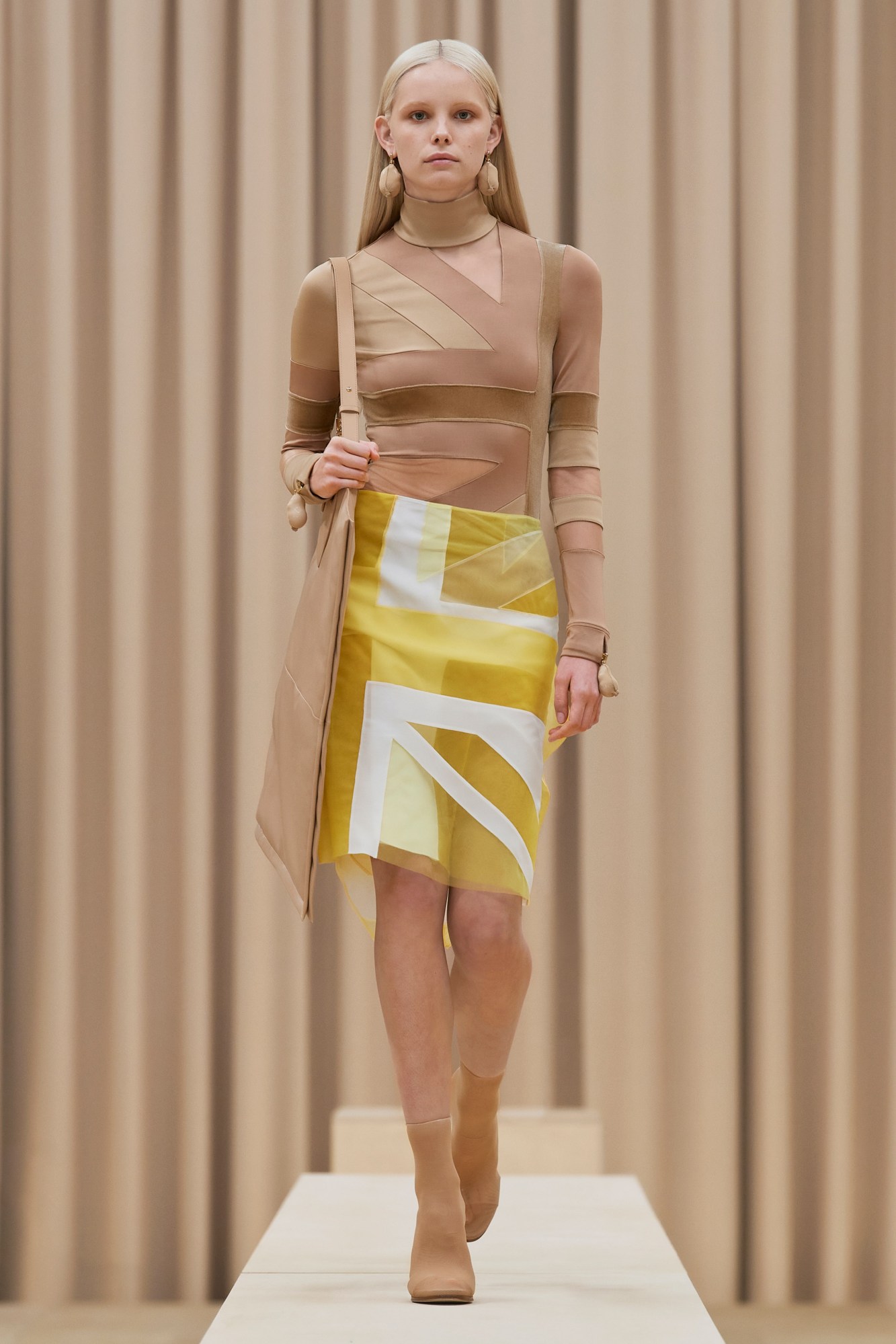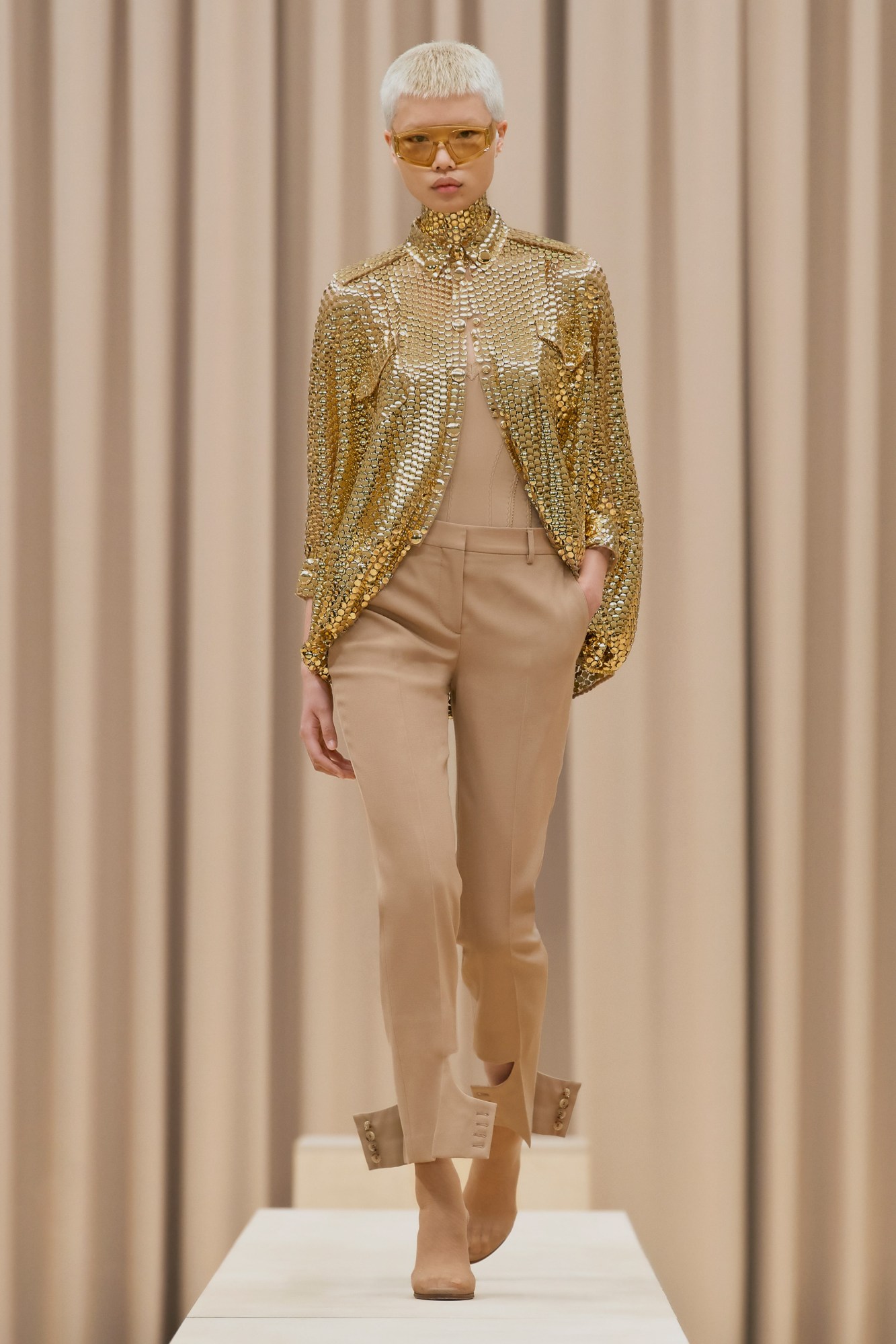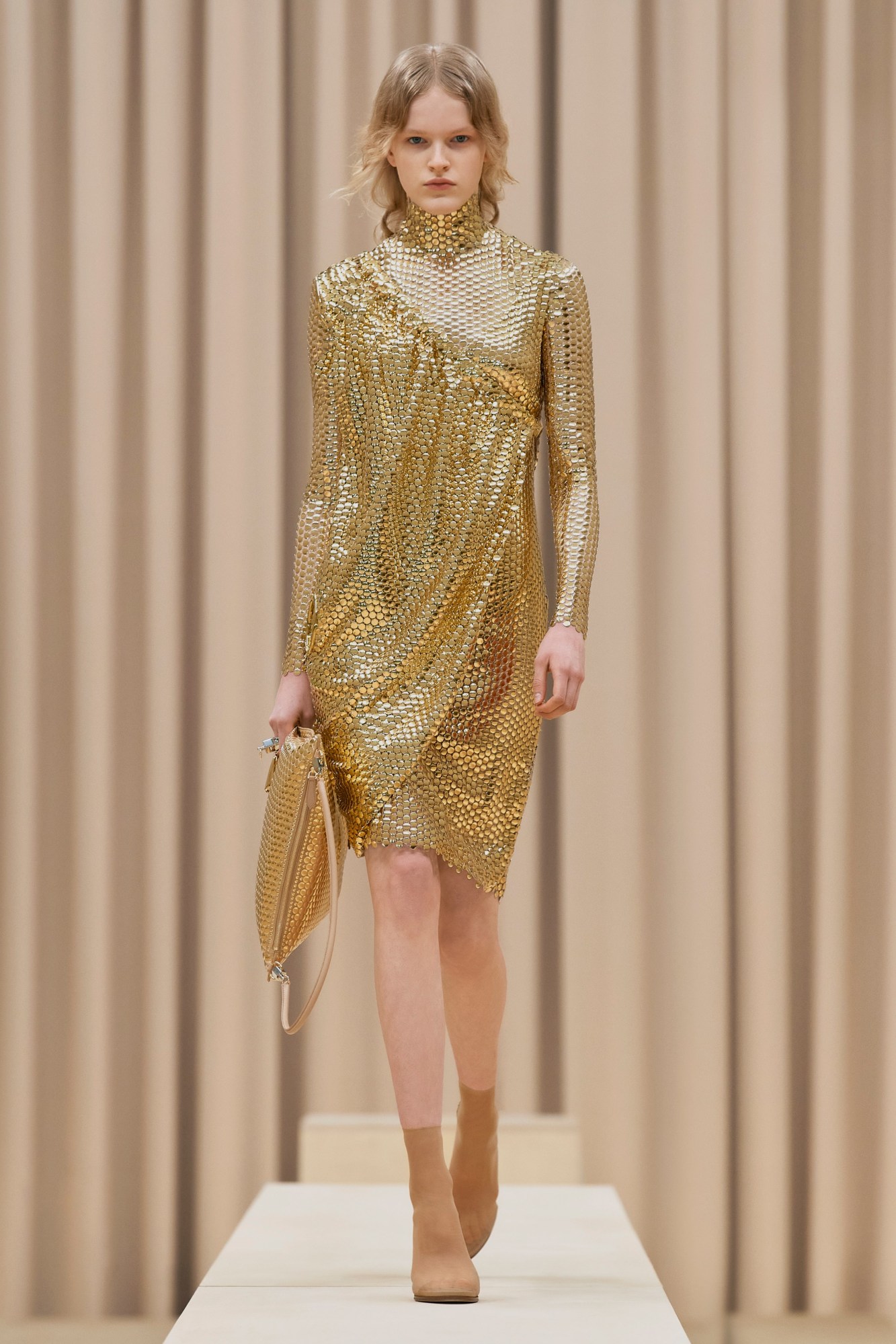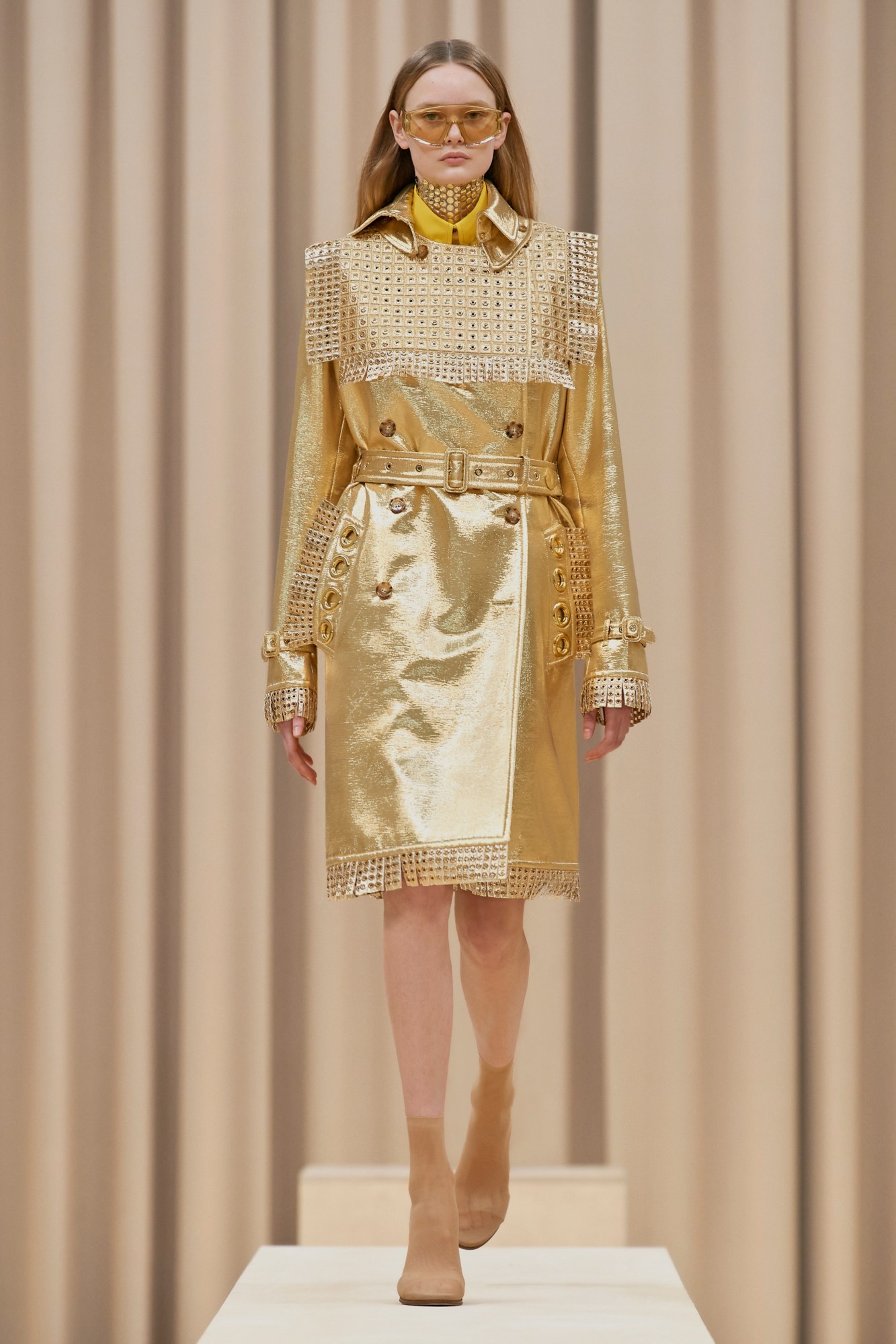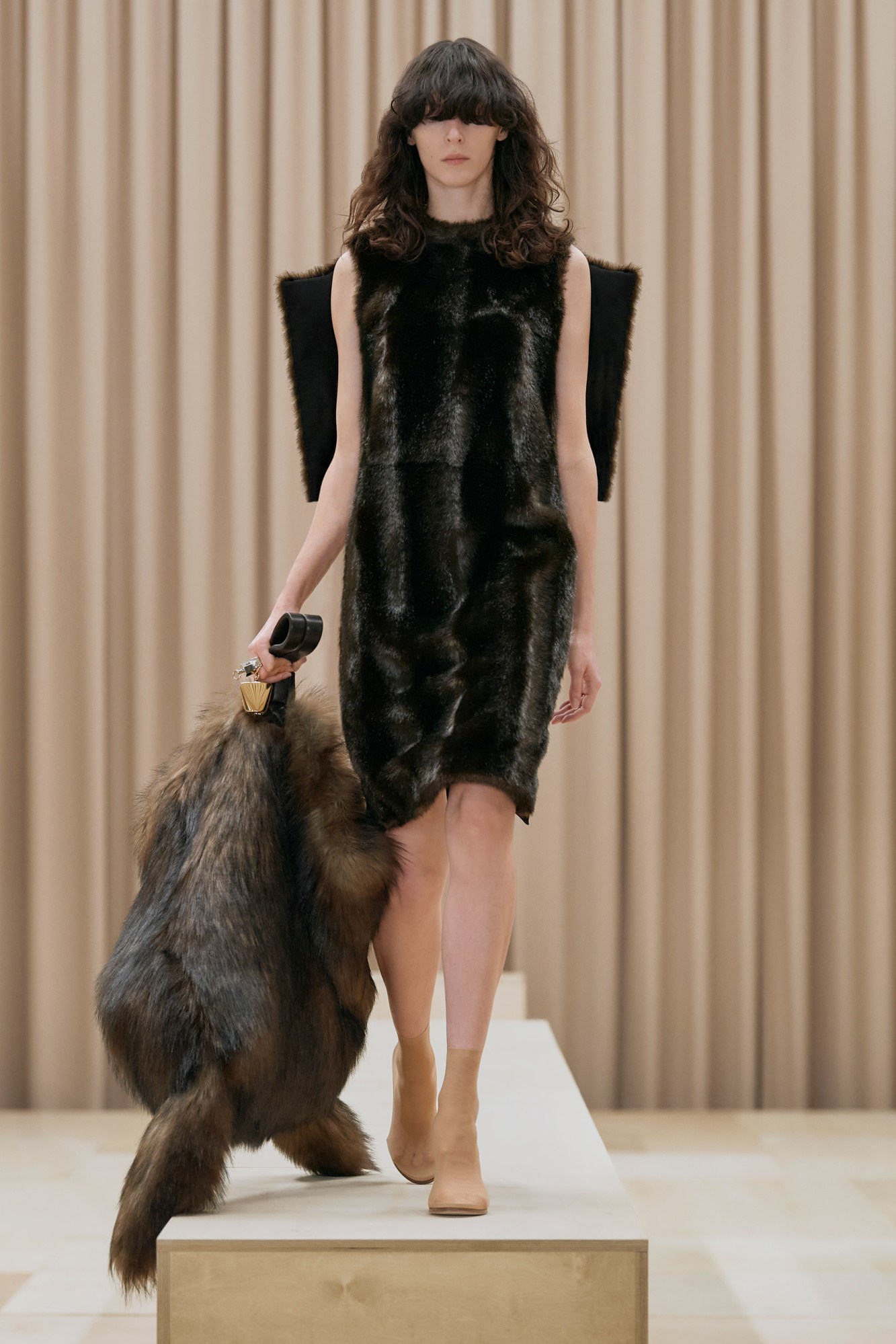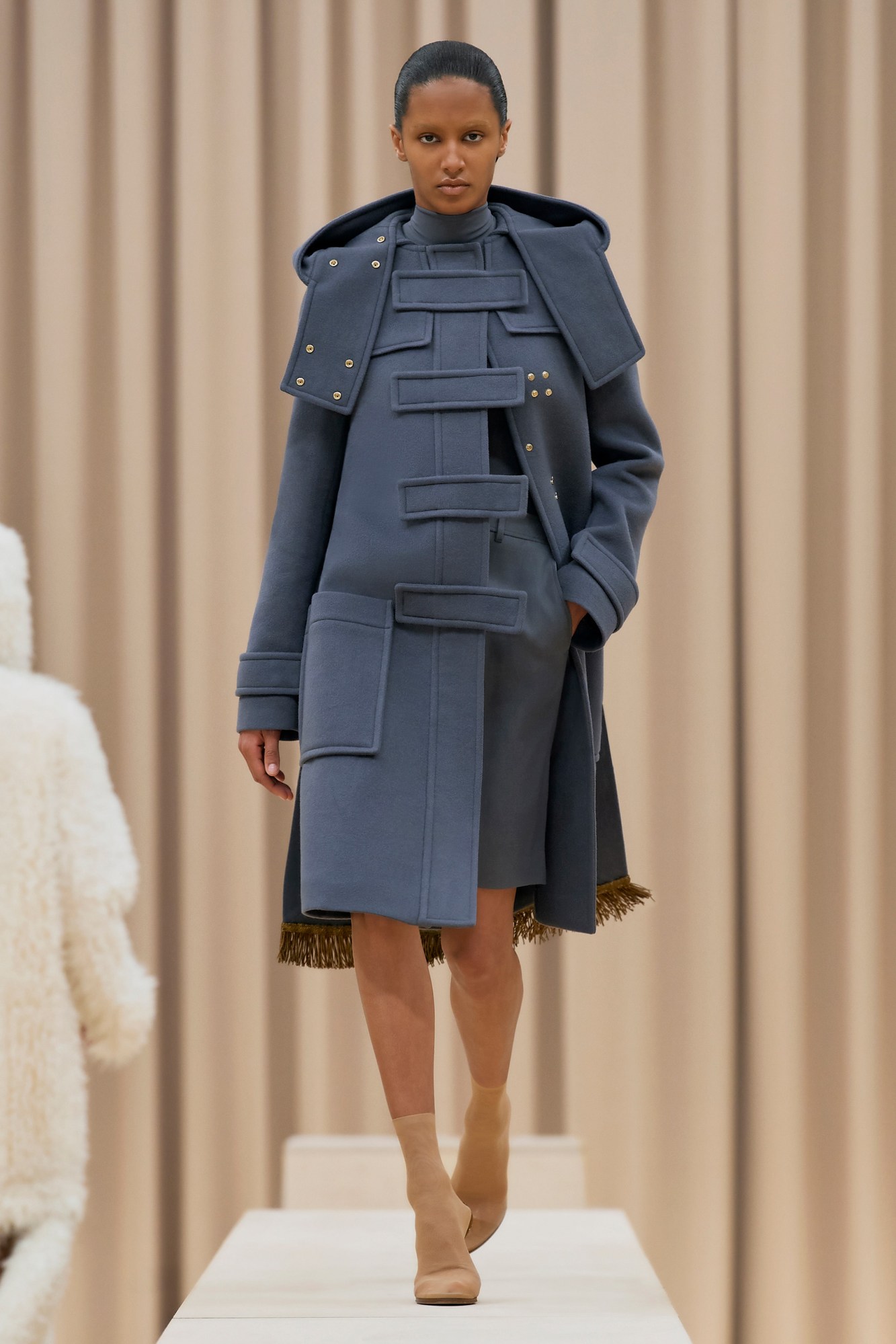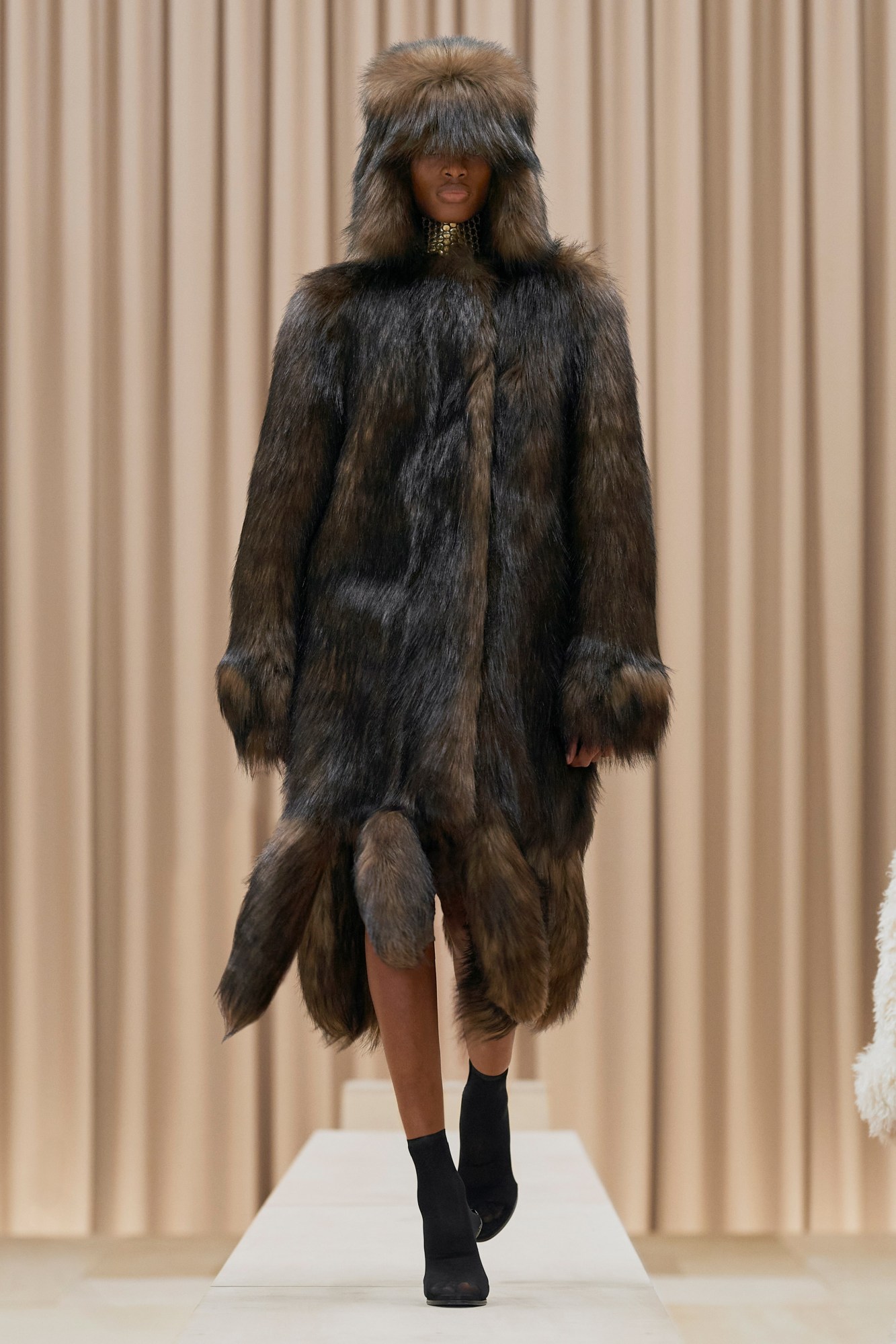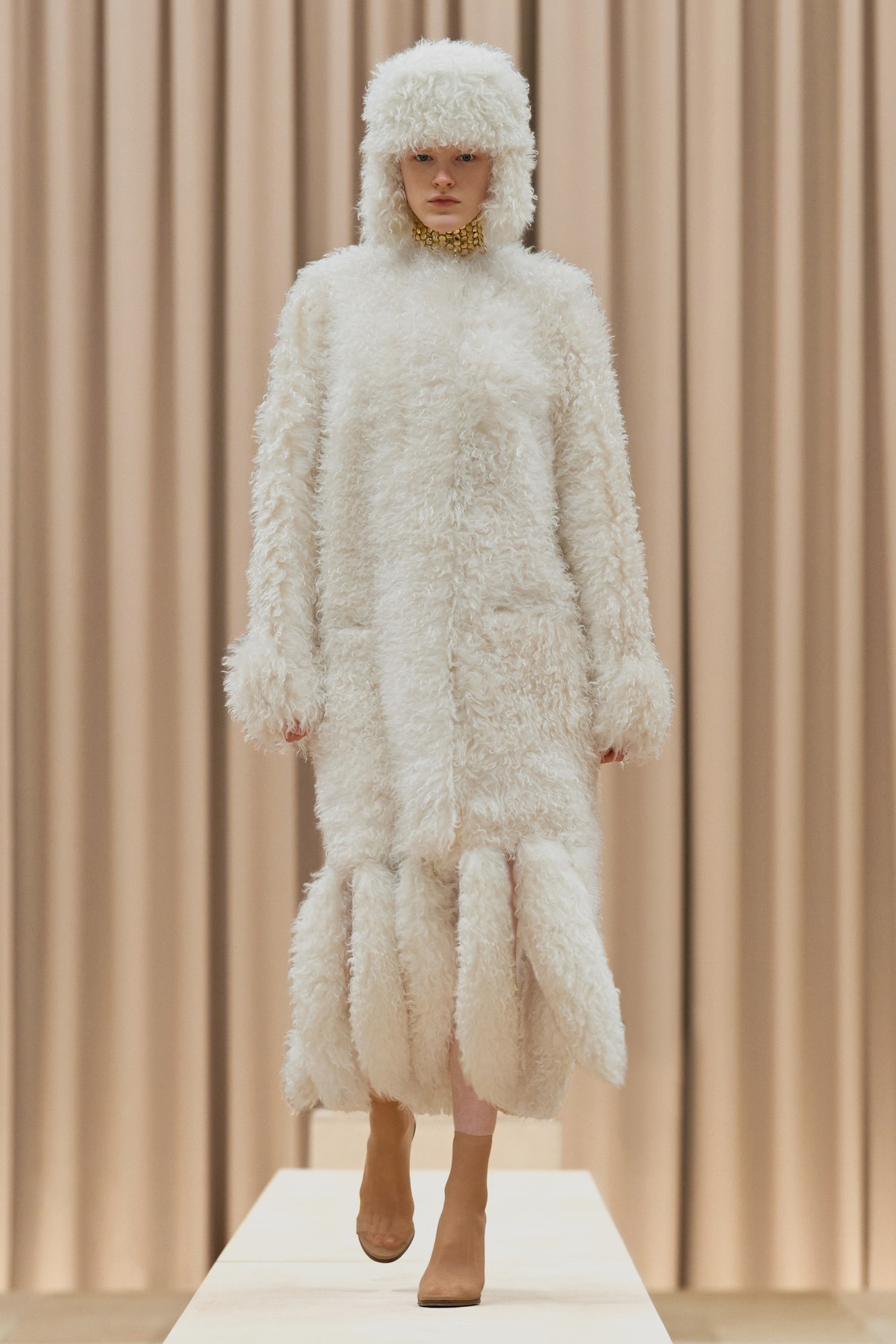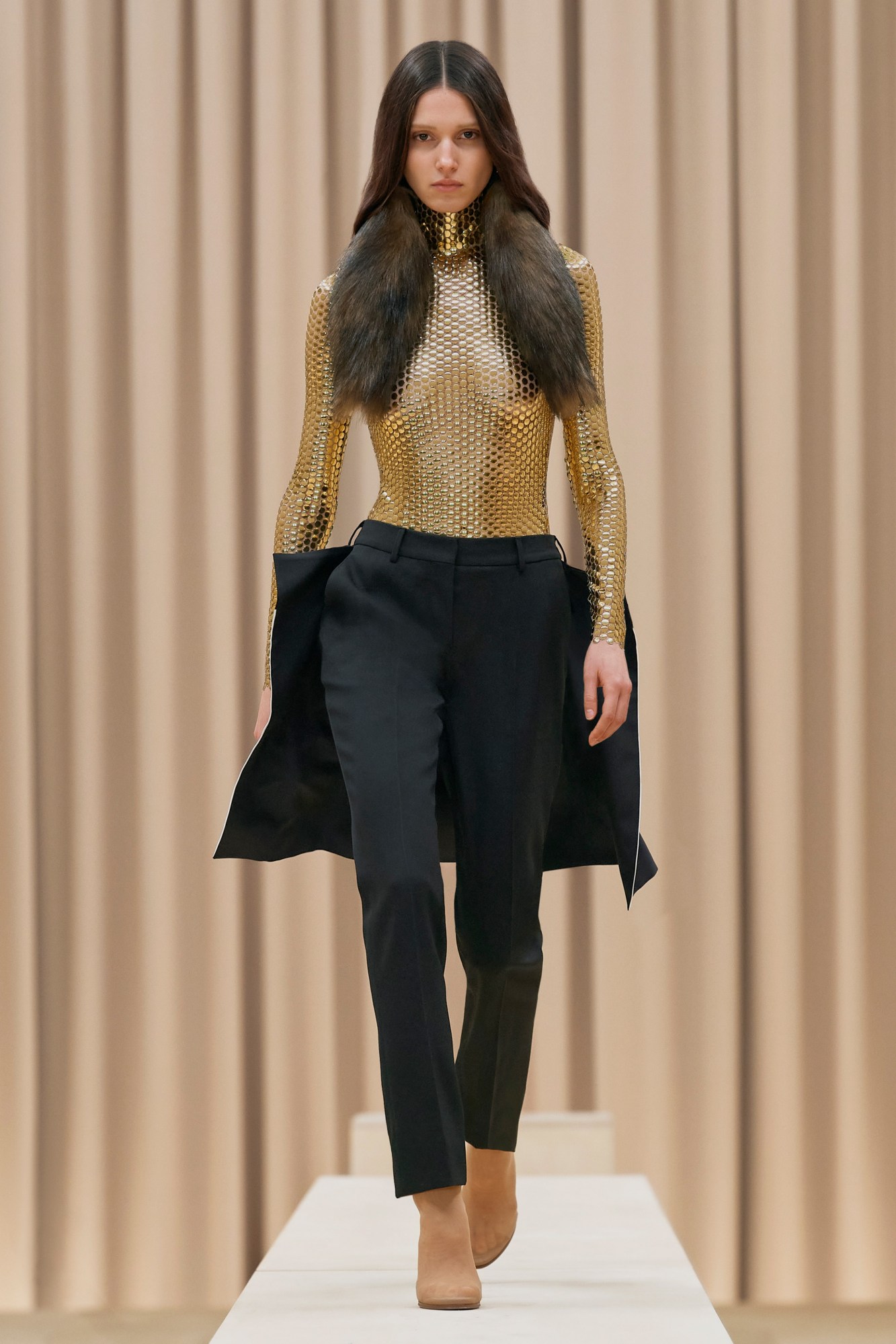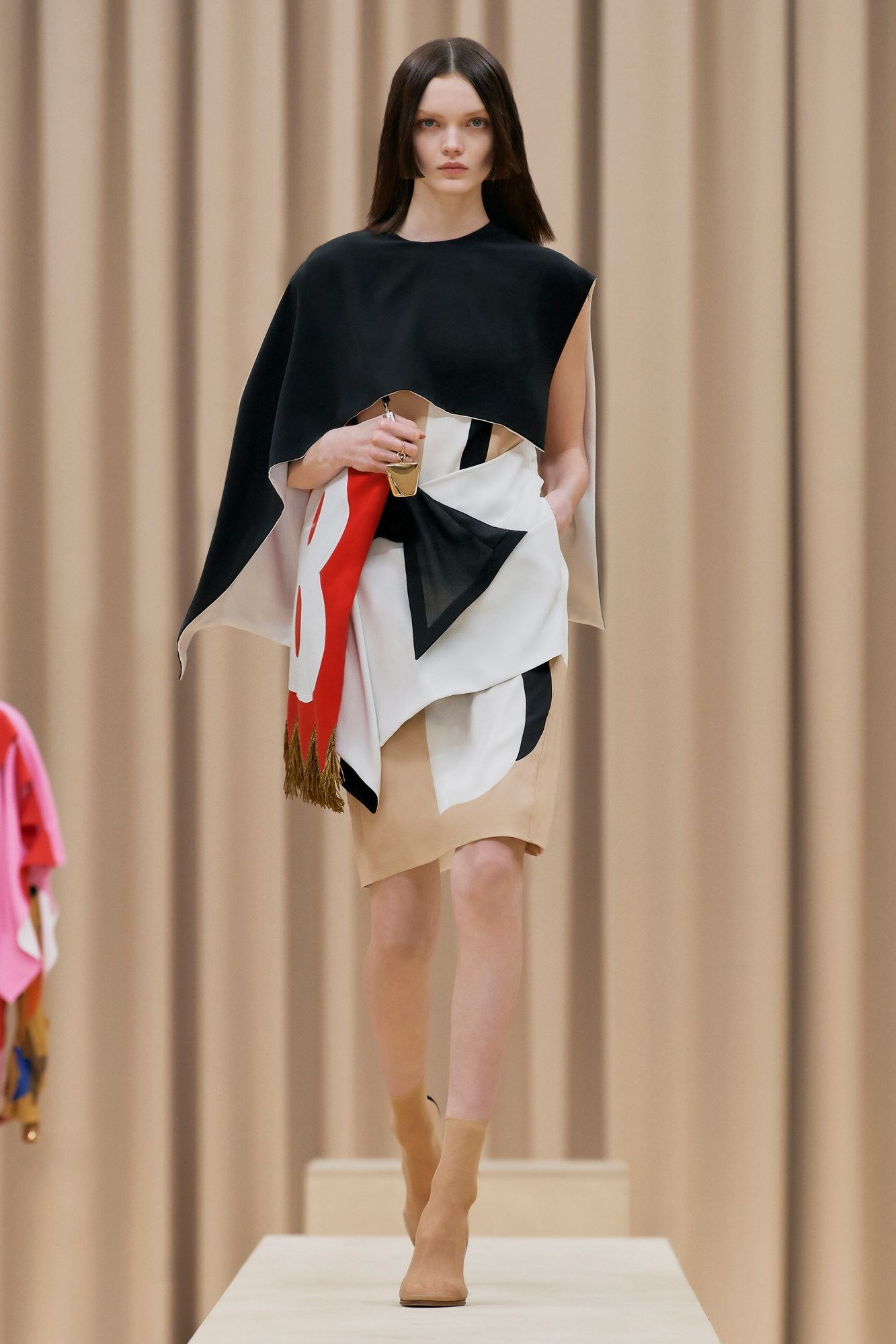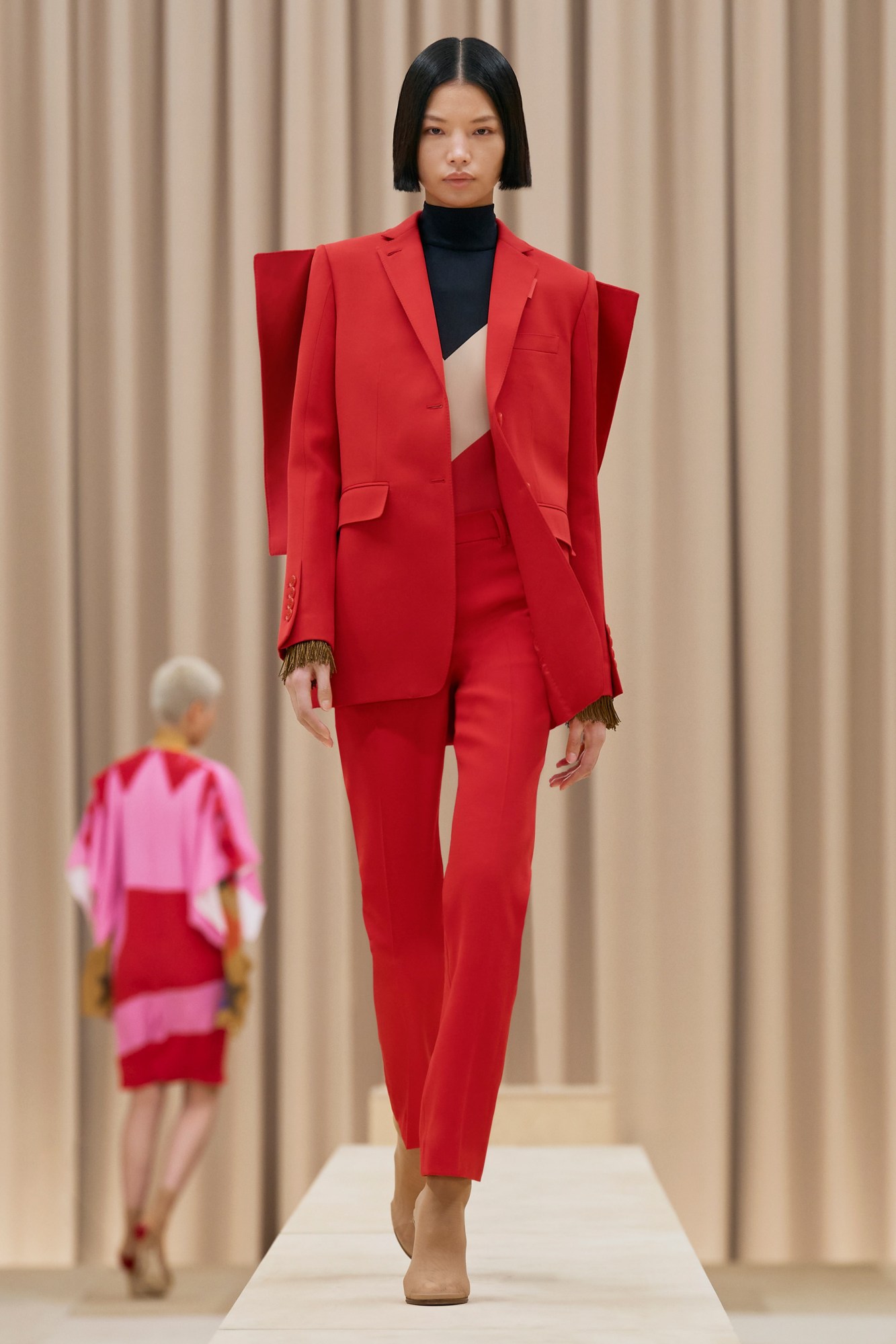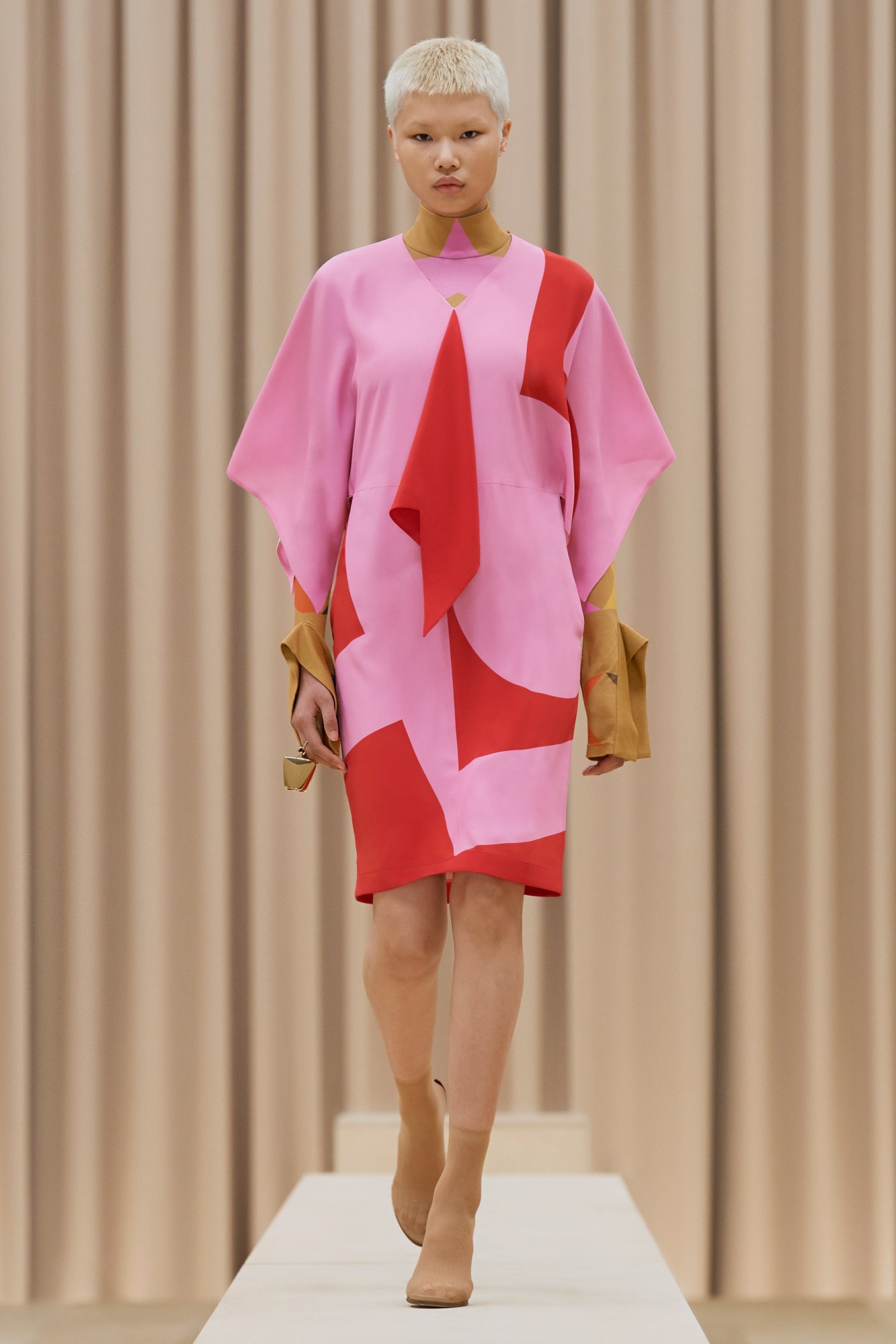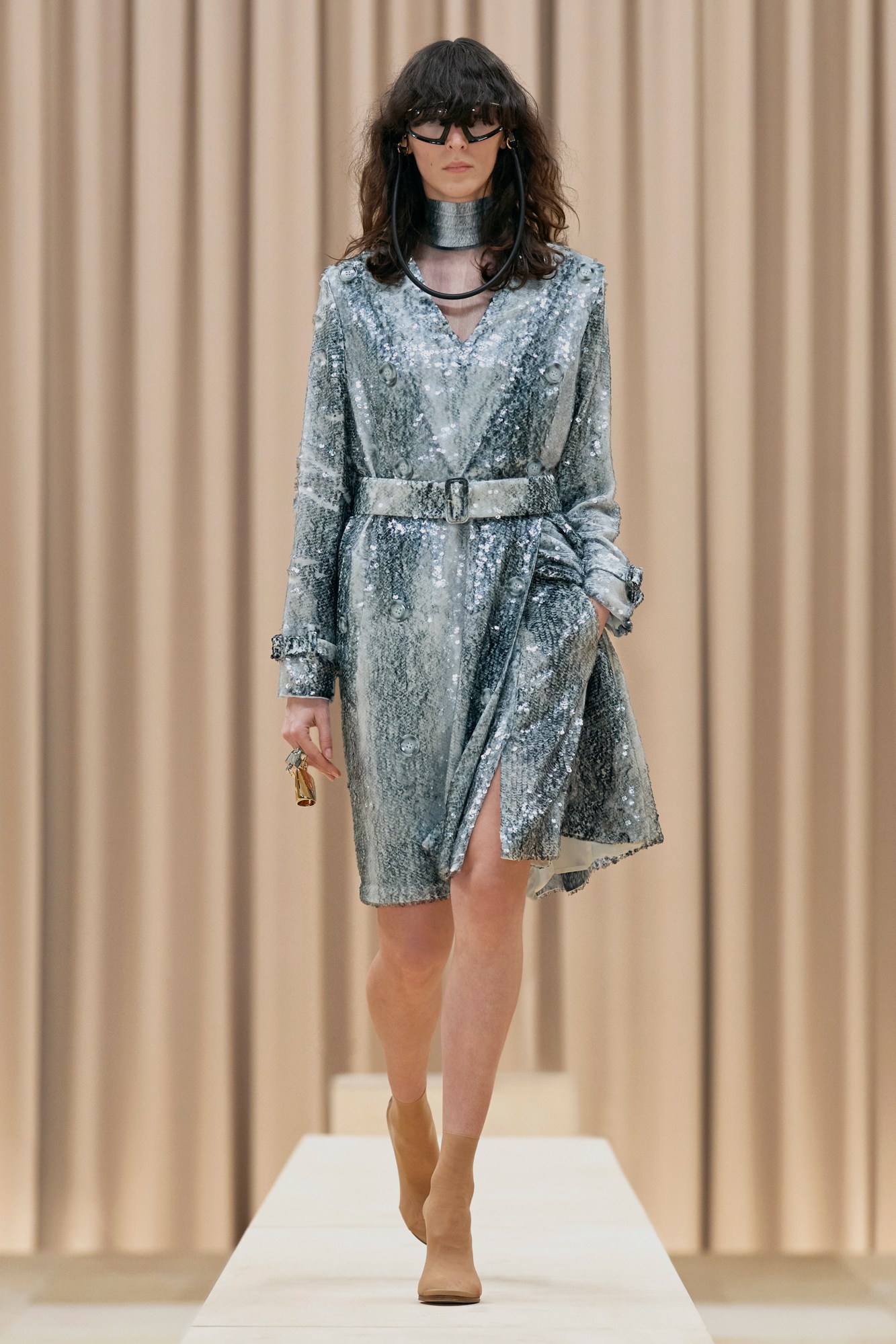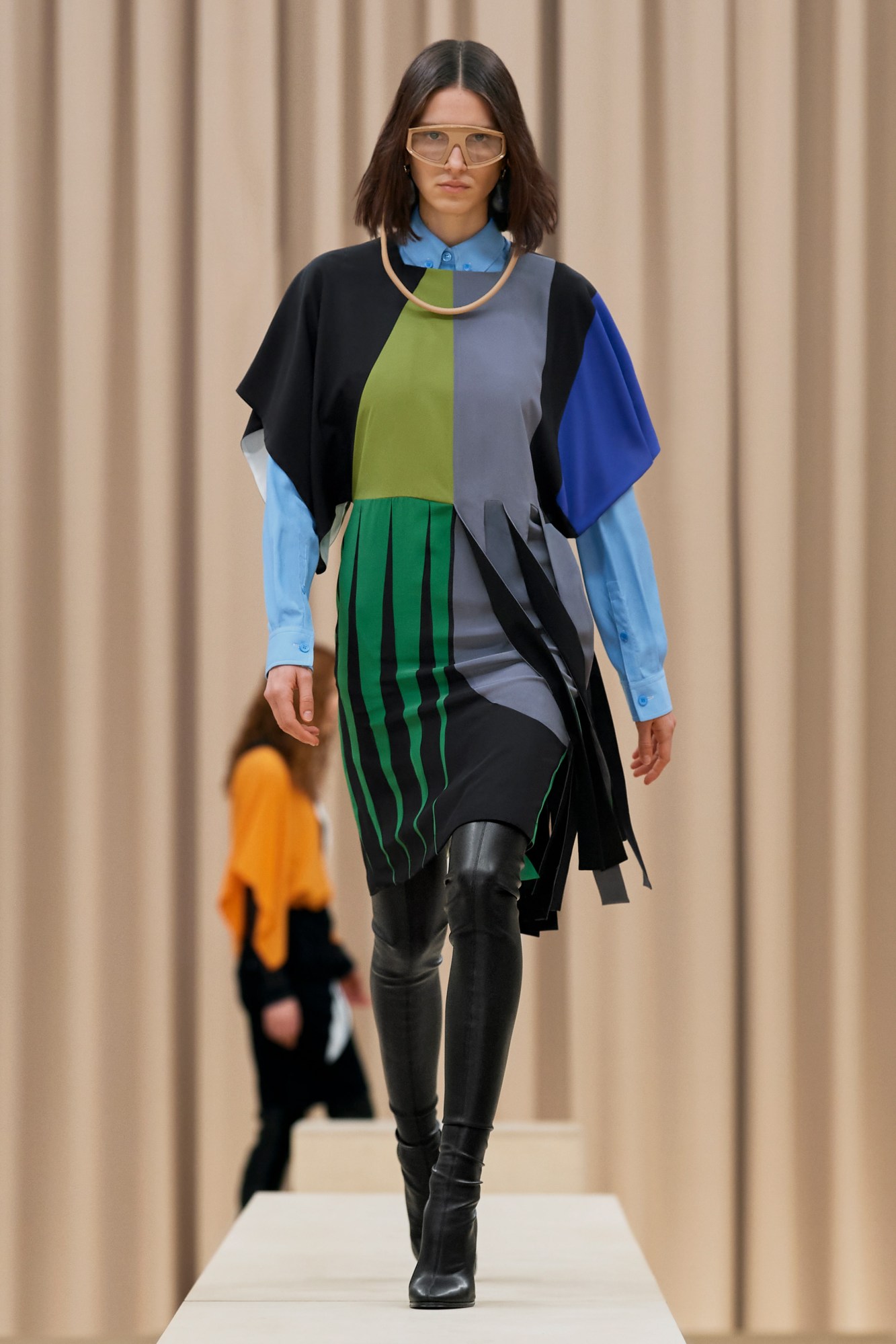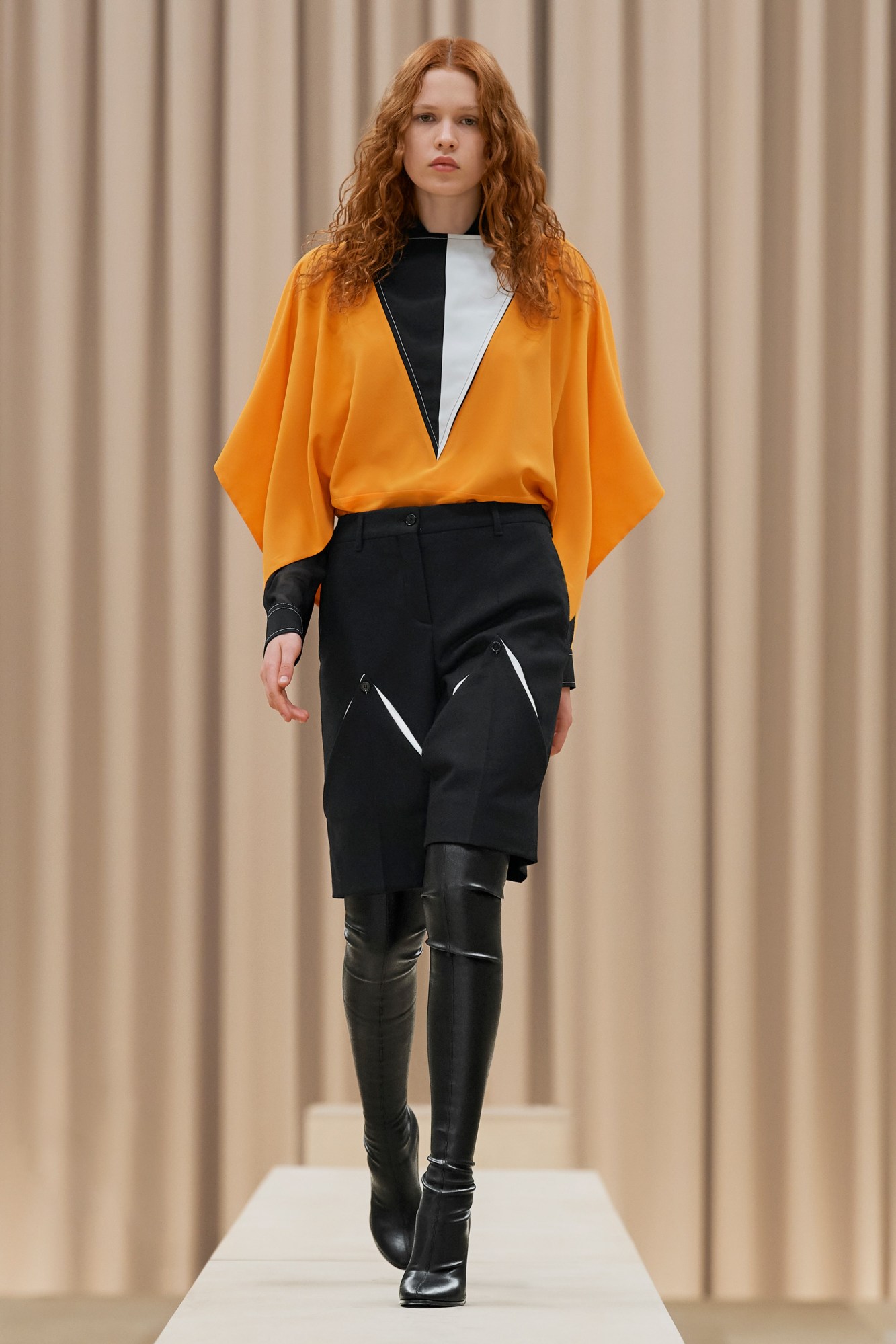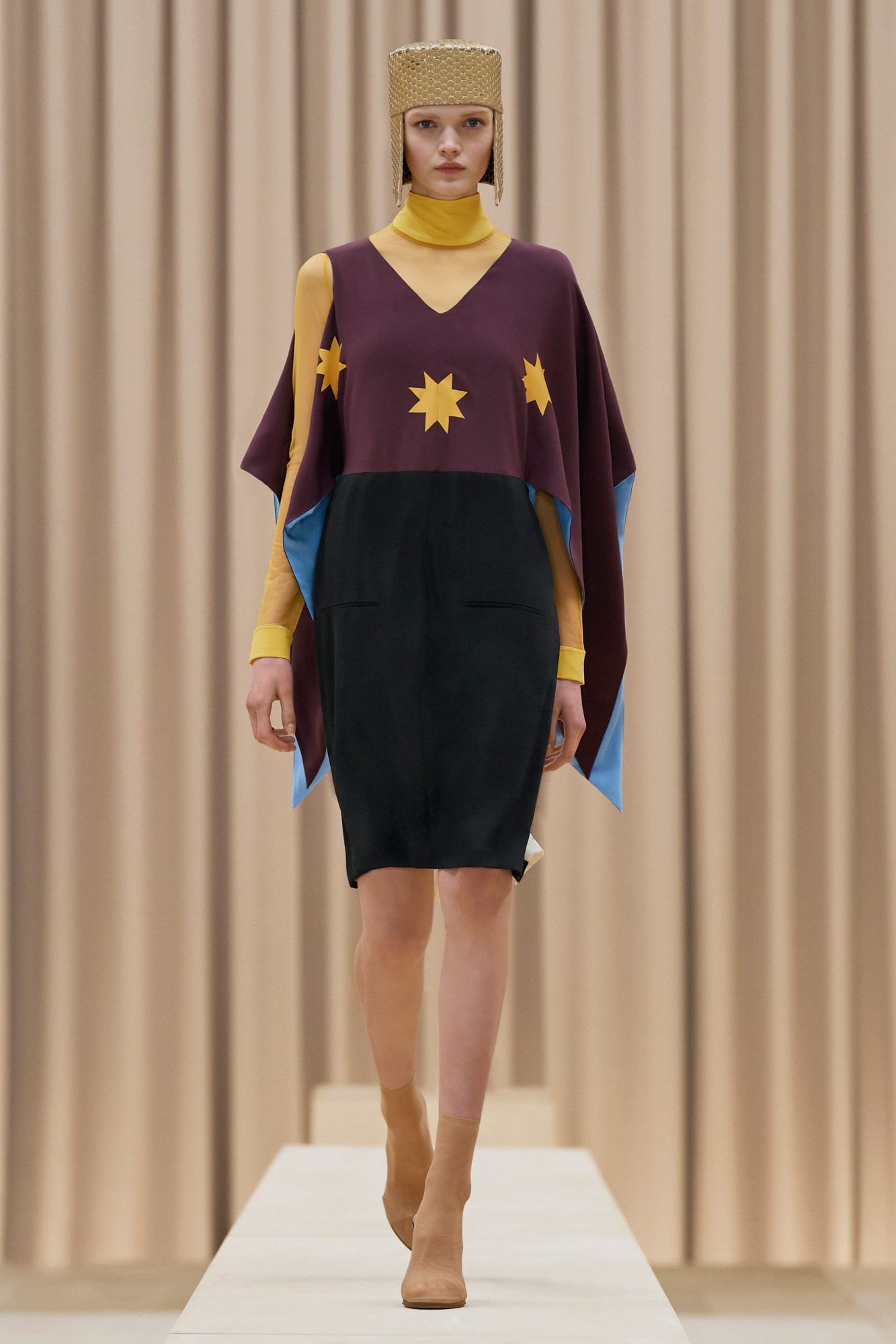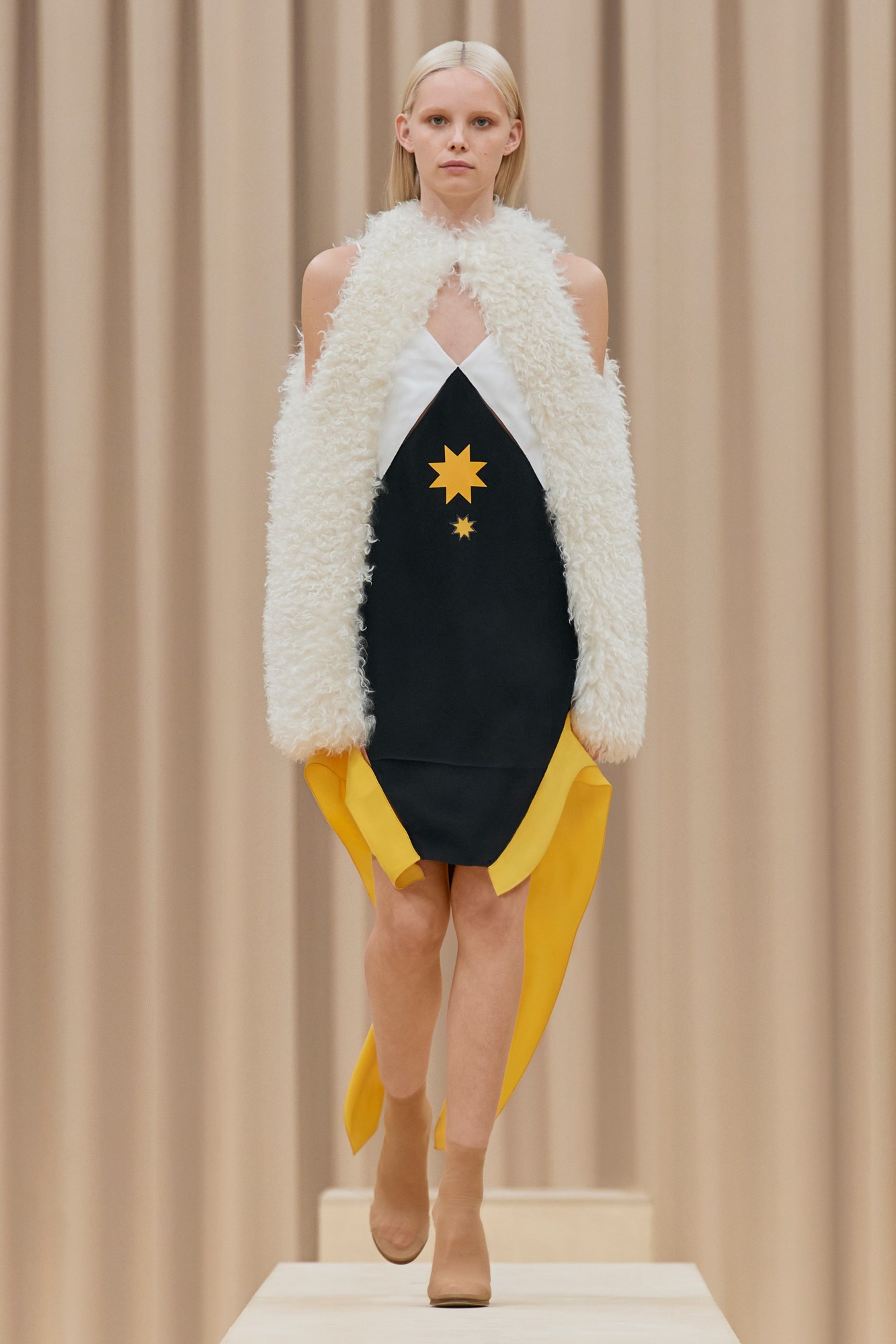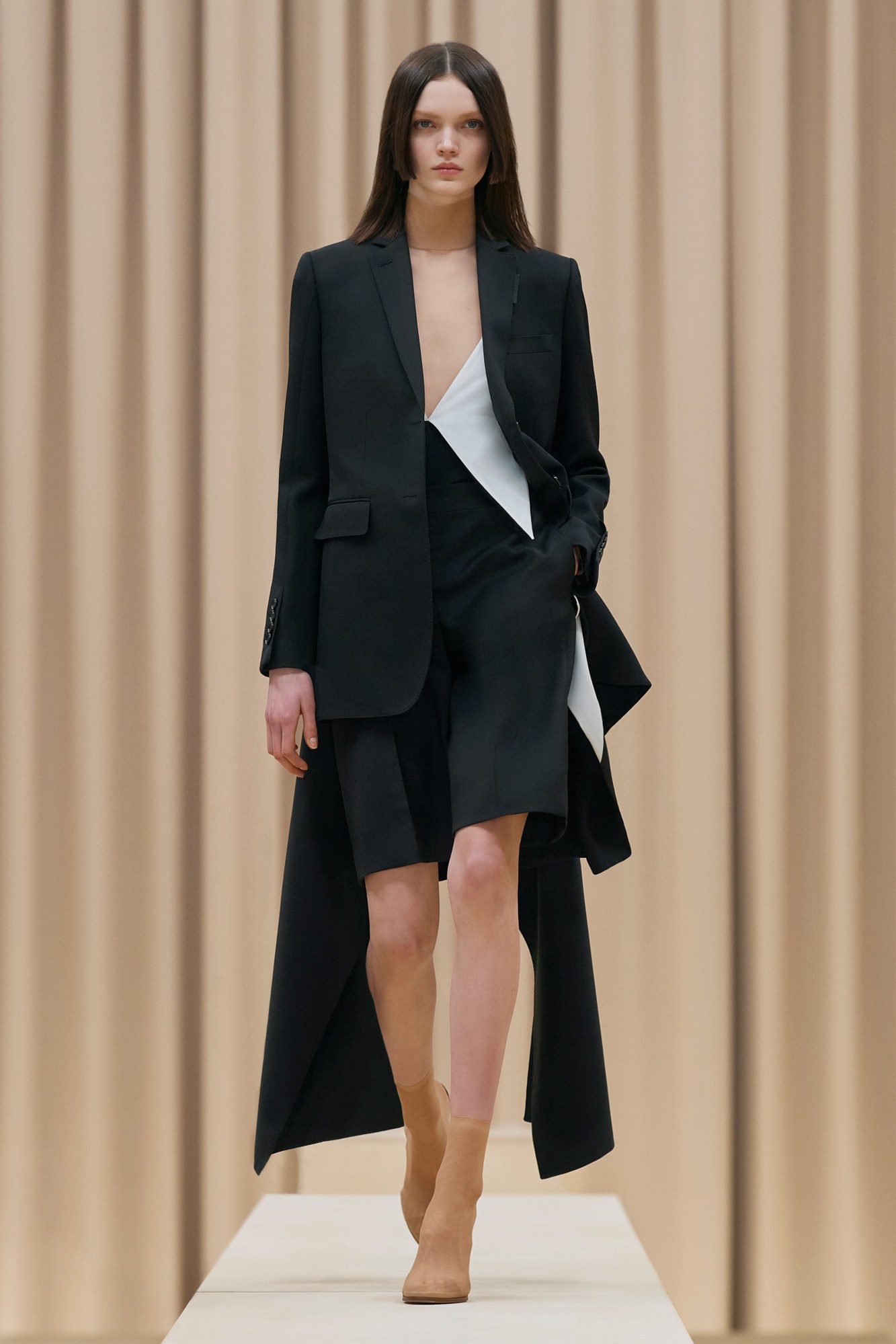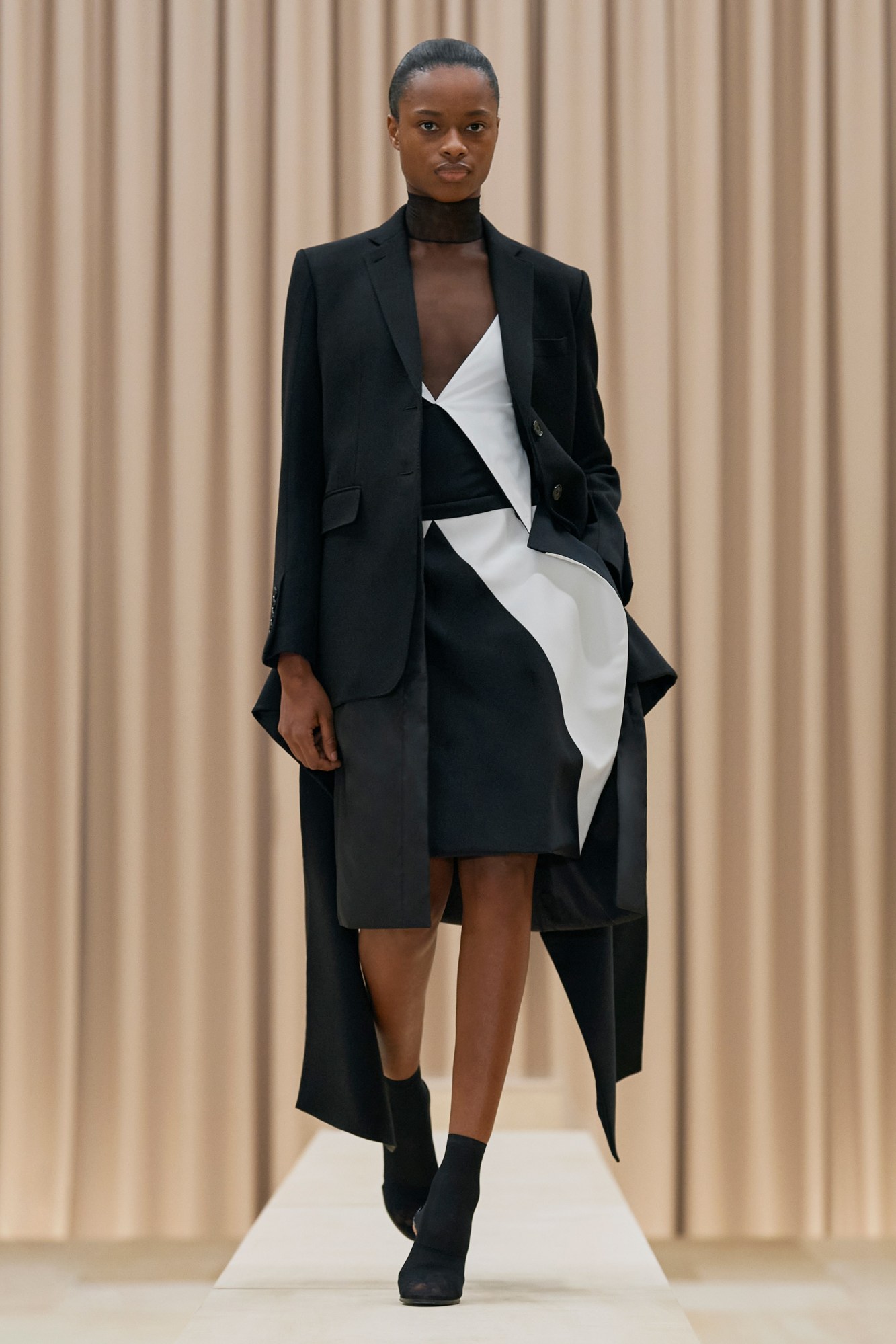What does it mean to be British right now? Your bet is as good as ours. As the conversations around Britishness continue to highlight disparity and division within the country’s population, it’s a strange time to consider patriotism. We live in a globalised world, after all, and there’s a confusing air of nostalgia in Britain right now, a rose-tinted delusion of what made Britain so Great anyway — and a refusal to acknowledge its deeply divided population. Britishness seems to be in a state of existential crisis, its definition different depending on who you ask. As far as fashion goes, it doesn’t get more British — or more global, for that matter — than Burberry, arguably the most prominent luxury house based in the UK. Its Italian-born, Central Saint Martins-educated creative director, Riccardo Tisci, has the benefit of an outside perspective — and his AW21 womenswear collection was about “shedding archetypes and readdressing preconceptions”.
Staged in Burberry’s flagship Regent Street store in London, Shygirl
introduced the show with an original spoken-word piece — prologued by a cast of characters including Princess Julia, Sakeema Peng Crook and Chi Virgo musing on the meaning of motherhood, femininity, and — of course — Britishness. Their answers were not what you’d expect, at least not what we’re used to hearing on the news. Similar to the brand’s menswear show last month, the space was a vision of luxe trench-beige softness, a maze of blocks of different heights that the models walked over. But the collection was anything but beige. Instead, it was brighter and more colourful than usual — a “rainbow shining through the rain” as the show notes put it — and there was a sense of optimism in the going-for-gold dresses and spindly stilettos. The message: soon we’ll be dressing with a purpose, on our way someplace somewhere other than a beer garden.
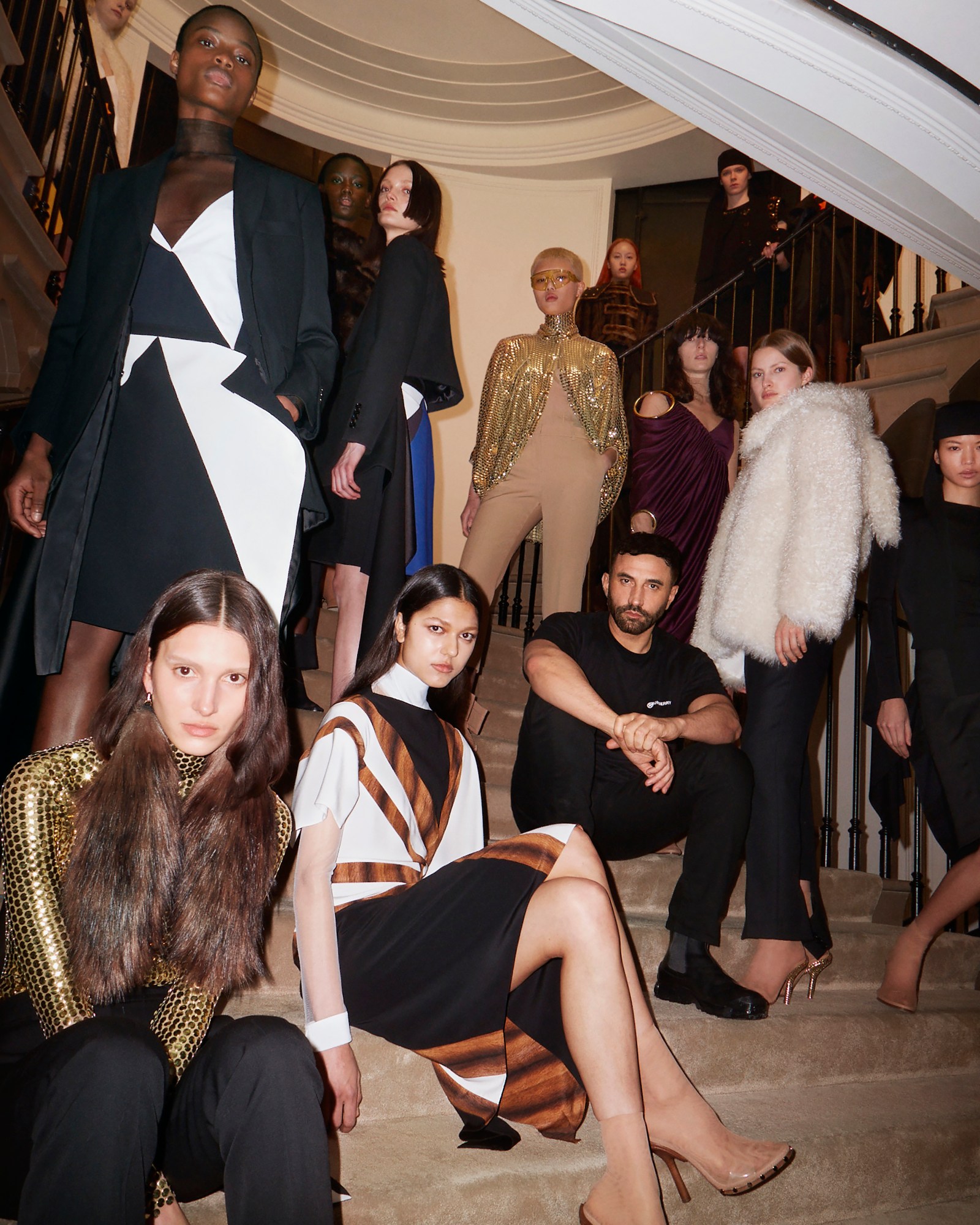
The collection was perhaps Riccardo’s most laser-focused yet, perhaps a result of its neat focus on womenswear (Burberry is now showing its menswear and womenswear separately) but also because it doubled down on a singular, recurring theme: fuzzy, fluffy shearlings and faux furs (Riccardo was inspired by the outdoor craft movements of the early 20th century) juxtaposed with sleek, sharp city-slicker dresses and coats. “I had time to slow down. The fashion business is very fast. It’s a huge company. I was ticking boxes, and I was like, ‘Okay, stop’,” he told Vogue. Whereas his previous collections have often riffed on categories of Britishness — the lady, the vamp, the footballer, the gent — here was a cohesive vision of it, told through a concise collection of very glamorous clothes. In fact, Riccardo described it as “armour” — and what could be more British than its countrywomen putting in hair rollers for a supermarket shop, baring legs in the freezing cold and getting dressed up for a night out? “They are not afraid to challenge expectations and I have always been in such awe of their determination,” he said. “They are warriors.”
But where the collection felt especially prescient was in the razor-sharp dresses made from spliced Union Jack flags, the diagonal blue-red-and-white stripes of the British flag re-configured as colourful drapes and geometric bias-cut panels. Probably coincidentally, it comes at a time when the flag has become a symbol of changing attitudes and conversations about Britishness — on one hand, we’re seeing flags get bigger and bigger in the backgrounds of politicians on daily briefings; on the other, we’re seeing them debated over during political protests and heralded as symbols of nationalism. Here, Riccardo — Italian-born and London-based — re-configured the Union Jack in myriad ways — and a cobalt dress with yellow stars nodded to an underlying context of post-Brexit British identity (the brand has been outspoken about the damaging impact of leaving the EU on its business). Riccardo took his bow in a t-shirt that read: “Don’t believe everything you think.” Perhaps that’s an indication that what may appear as patriotically British conceals a much more nuanced take it beneath the surface.

